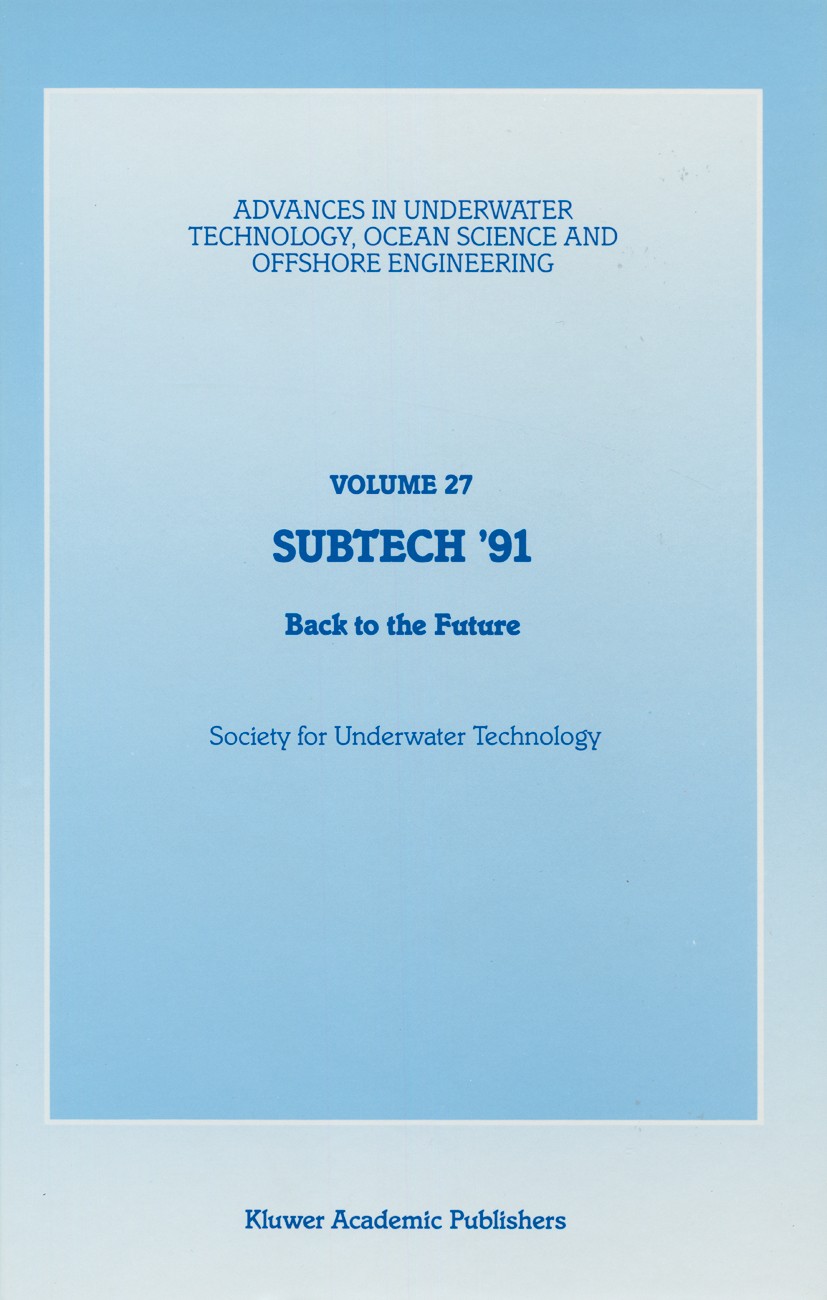| 书目名称 | SUBTECH ’91 |
| 副标题 | Back to the Future. |
| 编辑 | Society for Underwater Technology |
| 视频video | http://file.papertrans.cn/861/860377/860377.mp4 |
| 丛书名称 | Advances in Underwater Technology, Ocean Science and Offshore Engineering |
| 图书封面 |  |
| 描述 | The concept of using flexible, reelable pipe to transport liquids, gases, and vapours is not a new one. As early as the 1940s a steel braided elastomeric pipeline was developed for the Allied Forces in order to transport fuels to support the Normandy Beacheads. In fact, the longest flexible pipeline ever constructed is likely to be that laid across the English Channel as part of ‘Operation Pluto‘. The methodology used to handle and instal such pipe is also not new. Ellis (1943, London) in an early patent specification identifies three basic objectives for a flexible pipelining method. These are: prefabrication of the pipe onshore; coiling of the pipe on suitable drums or reels; and using such reels to lay pipe from anchored or motorised barges. The design concept for flexible pipe is also not a new invention given that flexible hoses and umbilicals have been in service for more than sixty years. A break-through was however achieved by the French Institute of Petroleum in the early 1970s when they developed an improved steel reinforced pipe structure having a high axial loading capaci ty which utilised corrosion and hydrocarbon resistant polymers to extend pipe service lifetime. Thi |
| 出版日期 | Book 1991 |
| 关键词 | Monitoring; coating; concrete; corrosion; design; flow; fuel; isolation; photogrammetry; pipeline; polymers; pr |
| 版次 | 1 |
| doi | https://doi.org/10.1007/978-94-011-3544-3 |
| isbn_softcover | 978-94-010-5569-7 |
| isbn_ebook | 978-94-011-3544-3Series ISSN 0952-1798 |
| issn_series | 0952-1798 |
| copyright | Springer Science+Business Media Dordrecht 1991 |
 |Archiver|手机版|小黑屋|
派博传思国际
( 京公网安备110108008328)
GMT+8, 2025-12-16 10:49
|Archiver|手机版|小黑屋|
派博传思国际
( 京公网安备110108008328)
GMT+8, 2025-12-16 10:49


